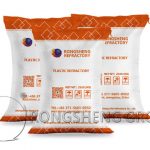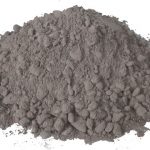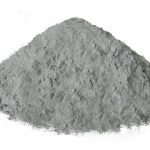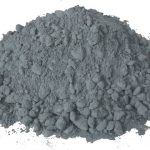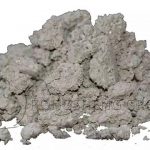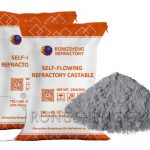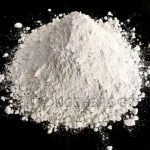The refractory plastics used for boiler linings and ladles are different. This is because the refractory plastic used for boiler linings is bonded with phosphoric acid, while the refractory plastic used for ladles is bonded with resin.
Refractory Plastics for Boiler Linings and Ladles
Refractory plastics used for boiler and heating furnace roofs are made from 0-3 granules and powder bonded with diluted phosphoric acid. Phosphate-bonded refractory plastics must be bound. For urgent use, the plastic manufacturer will directly add some binder, pre-binding the plastic during transportation. Upon arrival at the construction site, the remaining binder is added and the plastic is ready for immediate use. For longer-term use, the granules and powder are packaged separately, while the phosphate binder is packaged in drums. When the binder is partially added during construction, it must be bound for at least 16 hours before additional binder can be added before construction can begin. Therefore, different production and construction methods vary depending on the situation.
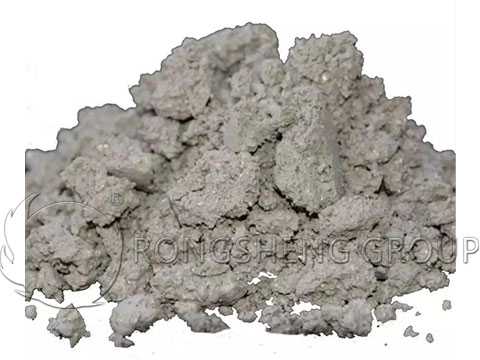
Refractory plastics used for ladles are resin-bonded and do not require binding. During construction, simply add the diluted resin in the appropriate proportion and stir to apply. Because the resin and phosphoric acid bonded materials have different application methods, their prices vary significantly. The operating temperatures also differ, and the results vary.
Refractory Plastics with Different Bonding Methods
Whether using phosphoric acid or resin for bonding, both require a specific ratio of aggregate and powder as raw materials, and the binder is added in the same proportion. The only difference is whether the material is trapped or not, and the price point. Of course, the operating temperature also varies. However, the amount of refractory plastic used in the ladle is limited, serving only as a repair. Phosphoric acid-bonded refractory plastic can also be used for lining repair and can be applied to large areas of the working layer.
The two different bonding methods of refractory plastic differ in the binder and the method of addition. The construction and ramming methods are essentially the same, but they are used at different temperatures for different furnace linings.
Plastic Refractory for Boilers
Plastic refractory for boilers is a type of monolithic refractory material used in boilers. The following is a detailed introduction:
Definition and Composition
- Definition: Plastic refractory is a monolithic refractory material that is formed by mixing granular and powdered materials with binders such as plastic clay and plasticizers, and then adding a small amount of water. After thorough mixing, it forms a hard, paste-like material that maintains a high degree of plasticity for a long time.
- Composition: The main components are granular and powdered materials, accounting for 70% to 85% of the total weight. It can be made from a variety of refractory raw materials, such as high-alumina bauxite clinker, corundum, mullite, and silicon carbide. Plastic clay is a key component, accounting for 10% to 25% of the total weight. It significantly affects the bond strength, plasticity, volume stability, and refractory properties of the plastic and its hardened form.
Performance Characteristics
- High Plasticity: Can be formed into any shape, meeting the construction requirements of different boiler areas, such as the furnace roof and walls.
- Short Construction Period: Can be applied by ramming or repaired according to the damaged area. No baking is required and the material can be put into service directly at the furnace temperature.
- Excellent Wear Resistance: Some plastic refractories have excellent wear resistance and can withstand the high temperatures, high-velocity airflow, and wear and tear of materials within the boiler.
- Excellent Thermal Shock Resistance: Compared with sintered refractory products and other monolithic refractories of the same material, plastic refractories have better thermal shock resistance and can adapt to rapid changes in boiler temperature.
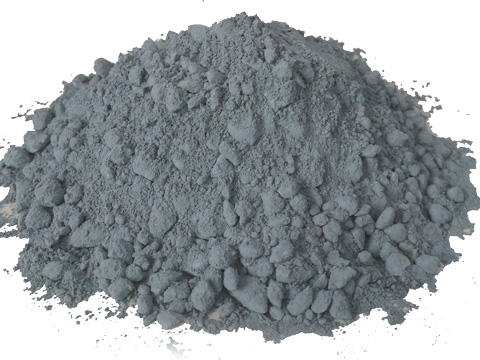
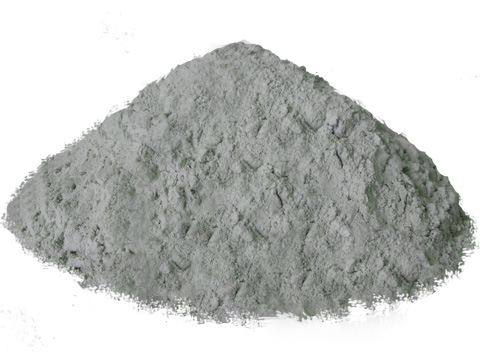
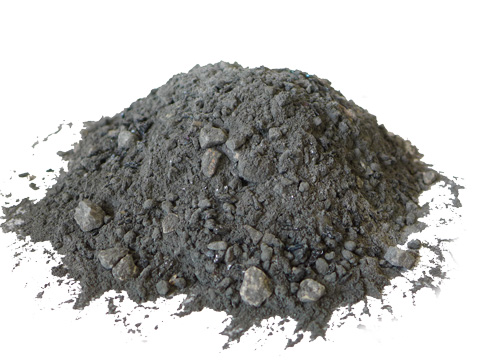
Common Types
- Wear-Resistant Plastic: This is a high-aluminum, corundum granular product that is an air-hardening material. It has low-temperature hardening properties and is suitable for high-temperature areas with low friction, such as boiler bottom plenums and primary air ducts.
- Refractory Wear-Resistant Plastic: Made with high-alumina bauxite clinker, corundum, mullite, and silicon carbide as aggregates, it offers excellent wear resistance, strong adhesion, and a high operating temperature. It is suitable for construction in thin areas such as furnace water-cooled walls.
- Corundum Wear-Resistant Refractory Plastic: The raw materials are composed of high-aluminum homogenized material, alumina powder, silica powder, clay, phosphoric acid, aluminum dihydrogen phosphate solution, and pure calcium aluminate cement. It is primarily used in the dense phase area of the furnace and in steam-cooled and water-cooled cyclone separators.
- Silicon Carbide Corundum Wear-Resistant Refractory Plastic: It offers excellent wear resistance, strong adhesion, and a high operating temperature. Its construction process is simple, the construction period is short, and no furnace drying is required after construction. Widely used in cyclone separators, heat radiation materials and other parts.
Construction Method
- Preparation: Before construction, clean the construction site to ensure the surface is clean and free of debris. Also, prepare the necessary tools and materials.
- Material Mixing: Mix the plastic material with the binder, coagulant, and other materials in a specific proportion and use a forced mixer to mix thoroughly.
- Construction Procedure: Generally, a ramming process is used to lay the mixed plastic material on the construction site. Use a wooden or pneumatic hammer to compact the material layer by layer, with each layer typically 50-70mm thick.
- Surface Treatment: Before the plastic material hardens, surface treatment can be performed. This can include using tools to squeeze out excess material, reshaping, and other methods. After construction, air holes should be drilled at regular intervals to allow for expansion joints to allow moisture to escape.
Scope of Application
- Circulating fluidized bed boilers: Suitable for the construction and repair of the dense phase area of the furnace, cyclone separators, return feeders, return pipes, and tail flue walls.
- Pulverized coal furnaces: The furnace roof can be rammed with high-aluminum refractory plastics, and plastic refractory materials can be used for the furnace interior walls and other areas as needed.
- Other boilers, such as chain grate furnaces and waste incinerators, can also select appropriate plastic refractory materials for the furnace walls and roof based on their operating temperature and wear characteristics.

